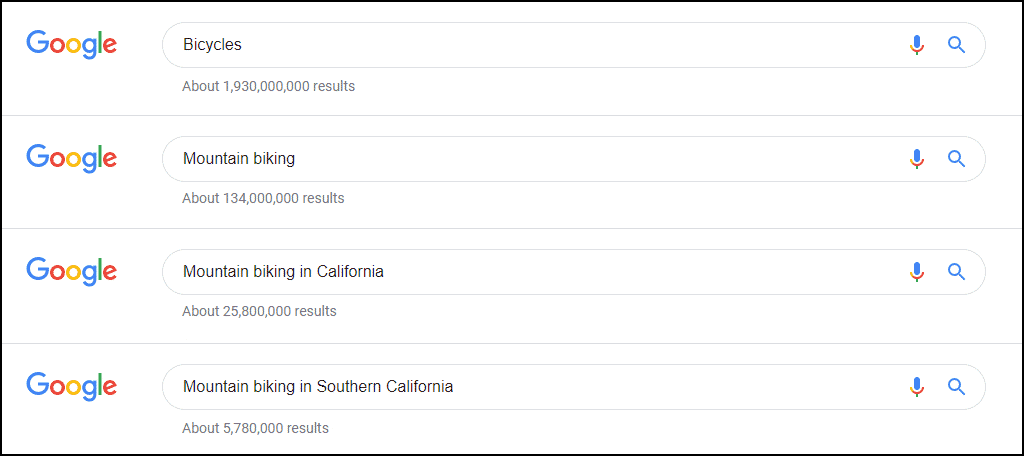The money you earn on a project after the initial work has been done (sometimes long after) is called passive income. Traditional forms of passive income include book or music royalties or income from investments or real estate.
But did you know you can earn passive income from a blog? You can. Let’s talk about a few ways you can do it.
First, though, the term “passive income” is misleading. The word passive conjures up a lot of mental images. Most of what comes to mind won’t help you create any kind of income. You won’t fall backward into mountains of passive income by being passive. It requires work and dedication.
You have to build a strong foundation to support a so-called passive income.
Income is called “passive” when it continues after the initial work is done, without any additional effort on your part. Passive income doesn’t mean you don’t work for the money, and it definitely isn’t a short-term strategy. Not if you’re building the foundation from scratch.
No doubt you’ve read about bloggers or YouTubers who make thousands—or tens of thousands—of dollars every month. There are plenty of those stories out there. And a lot of them are even true. What the stories often fail to mention is how much time and work went into the blogs or channels before they saw a penny of profit.
What It Takes to Monetize a Blog
The good news is it only takes one thing: visitors.
The bad news is it takes an awful lot of visitors. Many, many engaged and satisfied visitors.
Getting those visitors requires effort and dedication. To complicate matters, the content of your blog has to appeal not only to your readers but also to Google.
The truth is when you’re getting started, your focus should be on appealing to search engines. Without Google, gaining a large audience is, well, I was going to say virtually impossible. But in the interest of positivity, I’ll just say it would be challenging.
So how do you appeal to Google? By learning about SEO, or search engine optimization. SEO is an involved subject riddled with dark alleys and dead ends. But if you like detective work, SEO can be intriguing. And the more you learn about it, the better your blog will do in Google search results.
Learn everything you can about SEO. But don’t forget your readers. Yes, there are technical rules for appealing to Google, but what Google is really looking for is relevance. And not coincidentally, that’s the same thing your readers are looking for.
How to Give Yourself a Substantial SEO Advantage
Look at these Google search results.

- “Bicycles” returns almost two billion results.
- “Mountain biking,” 134,000,000 results.
- “Mountain biking in California,” 25,800,000 results.
- Finally, “Mountain biking in Southern California,” with 5,780,000 results.
You see where this is going. The more specific the search, the fewer the results.
What that means is the more specific your blog, the less competition you’ll have for the first page of Google.
In the online world, specific interests are called niches. The smaller the niche your blog fits into, the greater your chances for success. If you type the subject of your blog into Google and there are less than a million results, congratulations. You’re in a niche.
Now think about ways you can make your niche even narrower. More specific.
Of course, you can narrow virtually any subject down to a niche so small that no one cares about it. That’s not what we’re aiming for. You want to find the smallest niche that still has a substantial audience.
Here Are the Best Passive Income Ideas for Your Blog
I’ve ranked these passive income opportunities in order of general effectiveness. Which methods are most effective for you depends on what you’re blogging about and how much effort you’re putting in. These are opportunities that don’t require a financial investment. The only thing you’ll invest is your time.
1. Join Affiliate Programs

For most mid-level blogs, affiliate programs will be a prime earner. Affiliate programs are one of the few methods on this list that can start earning income from day one. Even with a relatively small audience. Of course, the amount of that income is directly related to the size of your audience.
Amazon, the Beginning and the End?
When we talk about affiliate programs, the clear leader is the Amazon Associates program. If there are opportunities for links to Amazon on your blog, it should be part of your passive income strategy. Just be sure to link to quality products. Your link is your implicit recommendation.
If you run a book blog, Amazon Associates is custom made for you. Virtually any book you could write about is for sale on Amazon.
Remember that the Amazon Associates program is different in each country. To get paid for referrals to non-U.S. Amazon sites, you have to register as an Associate on those sites.
Here are the links to every Amazon site with an Associates program: Brazil, Canada, China, France, Germany, India, Italy, Japan, Mexico, Spain, UK, US.
Amazon Associates is the best-known affiliate marketing program, but there are many other general merchandise affiliate programs as well.
But what about niche products? We talked about the importance of finding a niche, and you might think inhabiting a niche limits your affiliate opportunities.
Not so. If someone sells it, there’s probably an affiliate program for it.
If you run a blog about books, travel, airlines, gaming, home decor, website hosting, music, pets, yoga, nutrition, veganism or vegetarianism, organic products, essential oils, solar power, self-improvement, restaurants, makeup, jewelry, golf, fishing, home security, online dating, financial, cryptocurrency, cruises, fitness, supplements, weight loss, real estate, debt settlement, sports, coffee, photography, insurance, automotive, baby products, casinos, sports betting, education, event tickets, finding a job, or even marijuana and CBD (yes, really), there are affiliate programs that cater to your niche.
That’s a lot of niches. I put them all into one long, SEO-unfriendly sentence to make a point. There are a lot of potential referral fees for you out there, regardless of your niche.
2. Run Ads on Your Blog
The right kind of ads can make up an entire passive income business. If you can build a blog that attracts hundreds of thousands of daily visitors, ads can be easier to manage than affiliate links.
Be careful, though. Have you ever visited a blog that was virtually unreadable due to the intrusion of ads and popups?
They’re overdoing it. Don’t make that mistake. Too many ads (or aggressively intrusive ads) will repel visitors when our goal is to attract and retain them.
Let’s take a look at some of the different kinds of online advertising.
Display Ads
Display ads pay for impressions. Every time the ad is displayed to a visitor, that’s an impression. They don’t have to click or even see the ad. You get paid when it appears on the page. You earn less from display ads than from pay-per-click ads because a view is worth much less than a click.
Most display ad deals are made through ad networks. Google AdSense is an ad network. More on them in a minute. Some other top ad networks include Monumetric, media.net, Propeller Ads, Infolinks, PopAds, Bidvertiser, and Mediavine.
Pay Per Click (PPC) Ads
With display ads, you get paid when the ad appears on a page. But with pay-per-click ads, you are paid when someone clicks the link. The visitor doesn’t have to buy anything (as they do with affiliate links), they just have to click. Most of the ad networks mentioned above offer PPC ads.
Google AdSense
AdSense is kind of a hybrid of display and CPC ads. They serve up text ads, images, video, and even interactive media. Depending on which types of ads you choose to run, you can be paid for impressions (views) or clicks.
AdSense is the dominant player in on-site ads, much like Amazon dominates affiliate programs. But bigger doesn’t always mean best. Take a look at several ad networks and see which best fits your blog.
3. Write a Guide (and Turn It Into an Online Course)

One of the most often overlooked passive income ideas is writing a guide. Are you an expert on an activity (like mountain biking) or a city? I know you’re an expert on the city that you live in. Many first time visitors to a city don’t want to read an entire book to learn where to go. They want a concise summary of the hot spots. An online guide fits that niche perfectly.
A guide is usually most effective when it’s made available for free. Done right, it can draw in a lot of visitors. And if it’s done really right, it can be expanded into a complete course. Then it can be monetized.
People may expect a guide to be free, but they will pay for a course.
If you can create an online course, you can use sites like Teachable and Udemy to host it. It’s even possible to sell it right from your own WordPress blog.
4. Write an E-Book
E-books are among the hottest digital products available. In some cases, the actual contents may not differ much from a guide but delivered in book form. E-books don’t have to be long. There isn’t a real set standard length or word count. So if you can distill your blog’s subject into book form, you can write an entire e-book in little time.
This is yet another field dominated by Amazon, with its Kindle Direct Publishing arm. In this case, Amazon may be the best choice, but there are still other options. Smashwords, Google Play, Blurb, Lulu, and BookBaby are all great alternatives to Amazon.
By the way, your e-book doesn’t have to have anything to do with your blog. If you write fiction, poetry, novels—anything really—your loyal blog readers are likely to be interested in your book.
5. Start a Membership Website

A membership website allows you to charge readers for access to certain parts of your blog. They pay a monthly or annual fee for access to content that isn’t publicly available. A site like Medium is an excellent example of a membership website. There’s tons of free content, but to really see everything, you have to become a member.
Make sure your flow of publicly available articles doesn’t suffer from your paid membership work. Remember, it’s the free content that entices people to pay for membership.
6. Dropship Products
Okay, this suggestion is more relevant for an online store than a blog. But if your blog reviews products, you may be able to sell those products using dropshipping.
Dropshipping lets you sell products that you don’t have to stock or warehouse. You take the order, and another company ships the product to your customer. Remember the importance of your reputation if you decide to use dropshipping. You only want to sell quality products to your visitors. Sell them junk, and they won’t come back (except to complain).
7. Ask for Donations

This is last on the list because it’s typically the least effective. “Donate” buttons started appearing on websites around the turn of the century when PayPal began to become popular. They’ve been around a long time, and for that reason, a lot of people don’t “see” them anymore. In the same way we became immune to the old school banner ads, we became immune to donation buttons or links.
Patreon, though, came along to modernize the donation button. Patreon is a cross between a donation system and a membership site. Most Patreon users expect exclusive content in return for their support. So while it isn’t exactly passive, the “exclusive” content could be made up of things you intended to produce anyway.
Another way to include donations is by using Buy Me a Coffee in WordPress. You have access to a plugin and can place a donation button anywhere on your site.
Let’s Call This One Number 7 1/2: Passive Income Requiring a Financial Investment
Also known as It Takes Money to Make Money.
I said I wasn’t going to talk about passive income methods that required financial investment. But since we’re talking about blogs, I feel I should mention one. And that’s buying an existing blog that already has an audience.
People try to sell successful blogs for a lot of reasons. It could be that it’s not making as much profit as they would like (you can fix that). Maybe they’re burned out. In some cases, life changes and they no longer have enough time to commit to maintaining the blog.
Whatever reason the sellers have, there are marketplaces where you can buy active blogs. Do your research and ask the seller every question you can think of. Research the domain to make sure you aren’t buying a site that’s been banned from Google. That’s more common than you might imagine.
Before You Do Any of the 7 1/2 Things We Just Talked About
Stop.
Ask yourself if you’re ready.
Before you say, “Of course I’m ready to make money!” consider the realities and adjust your expectations.
A blog that attracts 50 visitors a day isn’t going to create much income. A blog without any useful or entertaining information isn’t going to create much income. And a blog that has as many ads as articles really isn’t going to create much income.
So what kind of blog can create income?
A blog with authority and relevance. One that is trusted and provides something of value to visitors. The best thing you can do to earn passive income from your blog is to build a great blog. Then think about income.
Build your blog naturally. Make it your priority to help people or provide them with something they want, and expect nothing in return.
If you can do that, and do it consistently, you’ll become relevant and gain authority. You’ll build a loyal audience who wants to see you succeed. And they’ll help you.
But first, you have to help them.

